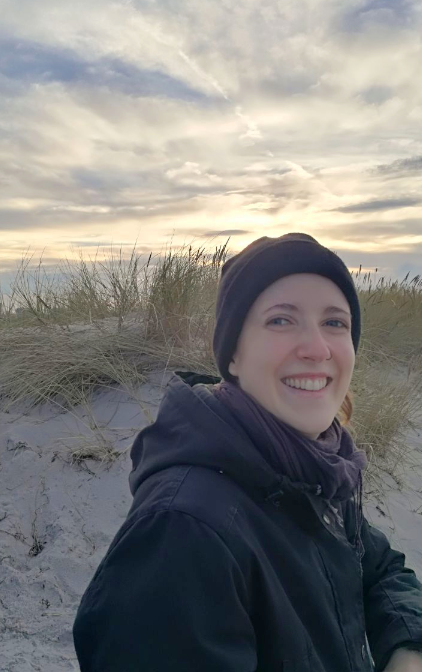By Jana Schluenss, PhD student at Université du Québec en Outaouais
Interdisciplinary projects? It’s fashion! Everybody talks about the benefits of interdisciplinary research projects: you look beyond the boundaries of your own field, you get to know a new perspective and new methods, you learn a lot of cool stuff – and the research project covers different angles of our complex reality. Fun!
But is it, actually?
How does the reality of a PhD student look like who actually works in such a project? Well… it’s complex!
I did my research in an interdisciplinary project working with other scientists from a variety of backgrounds: ecology, economics, engineering, … and I’m a human geographer! Here, I’d like to share three lessons I learned in that beautiful mess.
First of all, if you are in an interdisciplinary project, you really need to make an extra effort to, well, just understand what the others are talking about. (More than the usual effort, which can already be challenging in science…) And YOU need to share your own expertise in a way that is comprehensible for researchers outside of your domain, too. Which is a lot harder than it seems. You might take things for granted that are completely novel for your colleagues. Or the other way round, you just don’t get what the others are talking about because they are in an entirely different conceptual mindset.
At a very basic level, I remember a misunderstanding from my research project: we were talking about “protected areas”, which the ecologists understood as a territory dedicated for biodiversity conservation purposes, whereas the same term is actually used in a decision-support tool employed by the engineers in our team. There, “protected areas” refer to general aspects in society that need to be protected (such as human health and ecosystem quality). At a more fundamental level, we sometimes weren’t quite on the same page in terms of epistemology of science. As a human geographer, my work is situated in a constructivist approach (there is no “objective reality”. We make sense of the world through our understanding, which is influenced by historical and cultural context). My collaborators, on the other hand, adhered to a positivist understanding (“there is an objective reality and we can measure it”). Of course, these fundamentally different approaches come with very different methods and analytical frameworks.
This is scientific communication at its finest! So, even though we are not addressing the general public, we definitely need to adapt the way of communicating our research. That was lesson learned number 1.
Lesson 2: Do not start your interdisciplinary research project during a pandemic… (haha). Communication is always essential to establish a solid working base, but this is especially true for interdisciplinary projects. And communication is much more fluid, effective, and human if you are actually in the same physical space. When you perceive the entire body language. When you mingle during the coffee break. When you are actually fully present and not turning your camera off to water your plants after three hours of online presentations. These interpersonal dynamics are crucial for good scientific cooperation.
If possible, go for in-person meetings instead of online sessions. That was a game changer in our research collaboration, and communication became much more fruitful. I would also suggest you define communication rules in the very beginning of your project: what does respectful communication look like? How can we ensure everybody is heard? Who keeps an eye on the time during meetings? Defining these healthy settings for efficient communication will also help you get hard to explain points to your colleagues (as mentioned in point 1 ;))
[insert photos here. Caption: “The first (in person!) general assembly of my interdisciplinary research project Cost to Coast (C2C) took place after almost three years of collaboration during the COVID-19 pandemic… that was when we advanced the most! And of course, Southern France is a beautiful place for a general assembly.”]
Lesson 3: Be patient and flexible. Most of us experience at one point that our research objectives were quite ambitious considering the given time and resources. I guess this is true for most PhD projects, but interdisciplinary research projects might be particularly prone to fall in this trap, as they’re often exceptionally exploratory, bringing people together who usually don’t collaborate. So, after some time, sit yourself down and re-evaluate. What needs to be adapted? Where do we need to scale down? What is non-negotiable? Identify hurdles and how to overcome them. What kind of information is needed? Do you need to set up a new working group with a selection of project members? Do so! It is always a good idea to check in with each other and make changes if needed. This is part of the learning process.
In our project for example, we changed methods, switched tasks between people, and integrated new concepts during the four years of collaboration. This demands a lot of flexibility from all partners.
These are my main lessons-learned from our interdisciplinary research project. There are a lot more, but I think it essentially comes down to these three points.
So, in conclusion? To be or not to be part of an interdisciplinary project? Yes, but… 😉



About the author: Jana Schluenss is a PhD student in interdisciplinary environmental sciences at the Université du Québec en Outaouais. She is part of the Canada Research Chair in Ecological Economics, and is particularly interested in human-environment interactions from a social science perspective.
In addition to her studies, Jana has over ten years of practical experience in coastal ecosystem management and international collaboration as president and coordinator of environmental projects for a small NGO. She has also worked on habitat connectivity and environmental education.

0 Comments